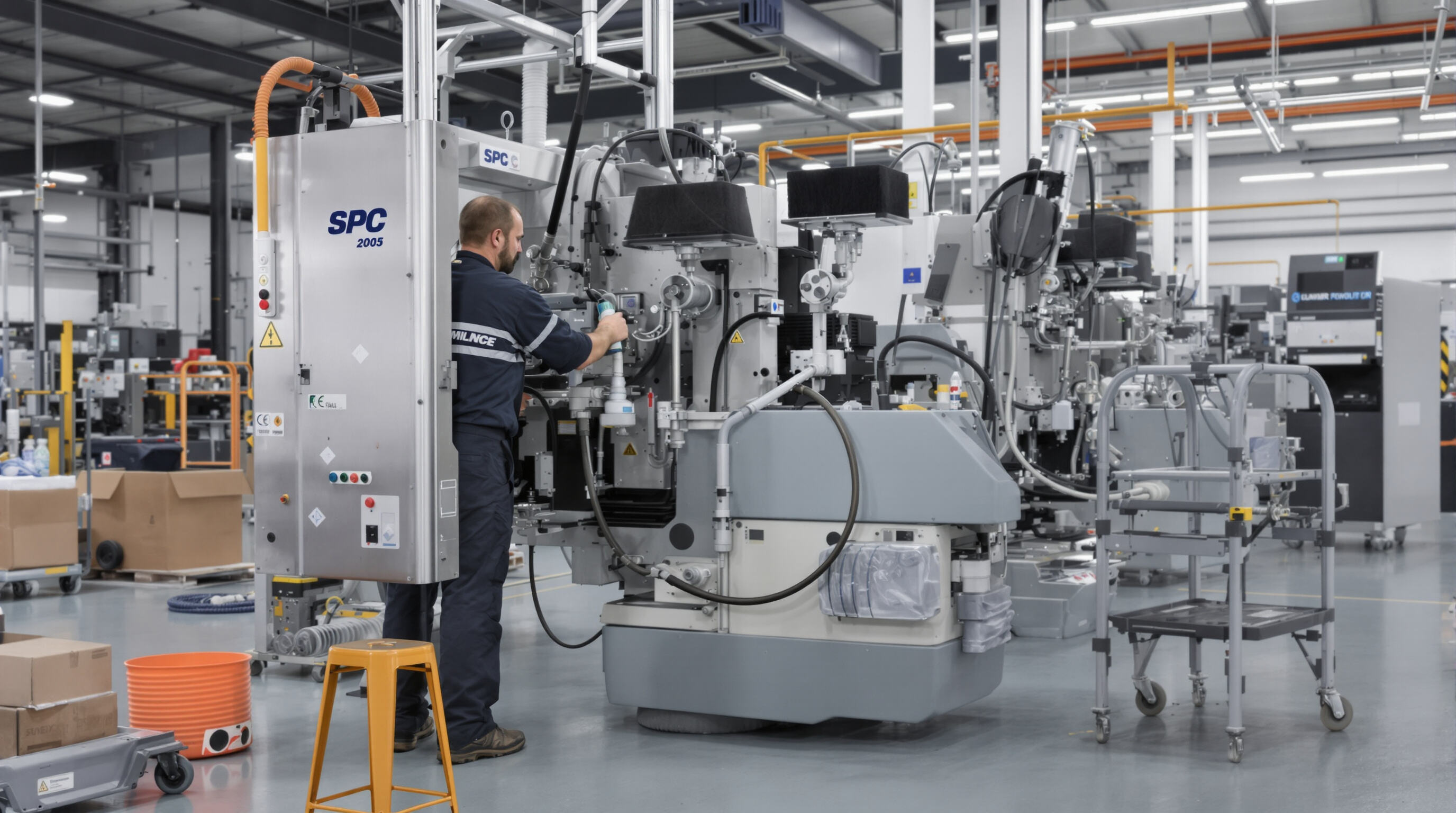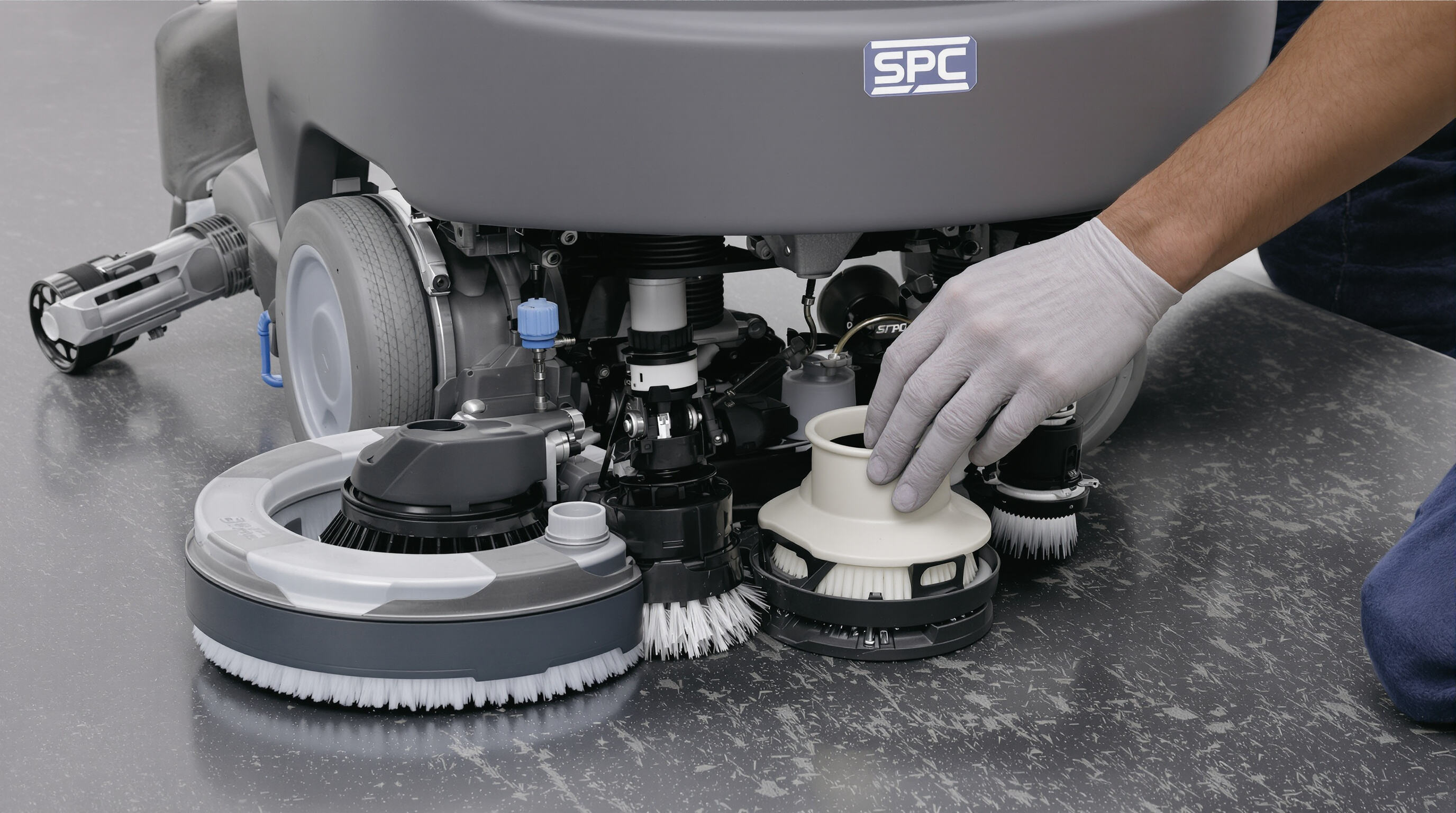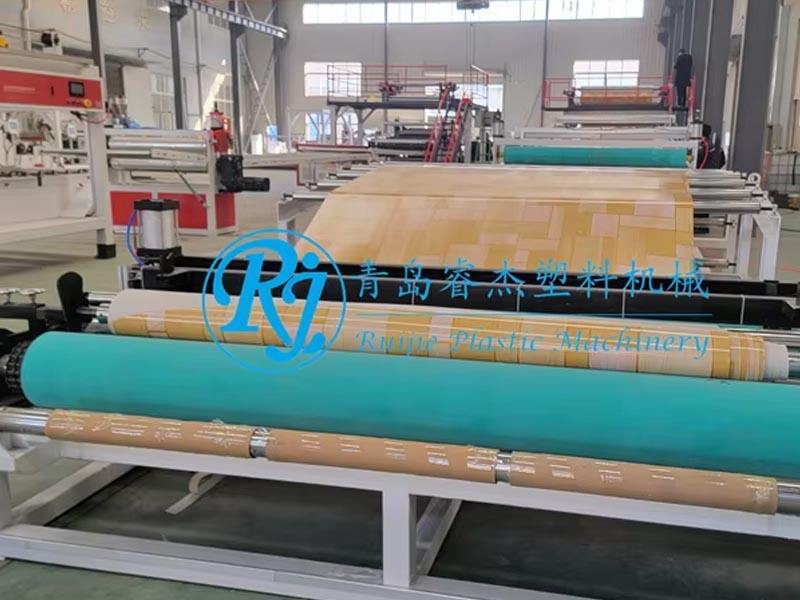Mit tesz különlegessé SPC padlózó gépek Egyedi a szakmai tisztításban
Az SPC-padlókhoz való gépeket egyetlen dologra tervezték: Stone Polymer Composite (kő-polimer kompozit) padlók tisztítására. Ez az anyag tulajdonképpen mészkő stabilizátorokkal és PVC-vel keverve, olyan anyagot eredményezve, ami külsejében hasonlít a kőhöz, de másképp viselkedik. A hagyományos padlótisztító gépek itt egyszerűen nem tudják elvégezni a munkát. Ezek a speciális gépek olyan kefékkel vannak felszerelve, amelyek percenként 50 és 400 fordulat között forognak, attól függően, hogy milyen típusú tisztítás szükséges. Ez a tartomány fontos, mert az SPC padlóknak van egy kemény külső rétegük, amely könnyen megsérülhet, ha nem megfelelően kezelik. Miért emelkednek ki ezek a gépek a többi közül? Moduláris felépítésüknek köszönhetően a szakemberek gyorsan tudják cserélni a különböző típusú tisztítófejeket. Makacs foltokat kell eltávolítani? Válts tisztítólemezre. A fényes felületeket még fényesebbé szeretnéd tenni? A polírozó lemezek csodákat művelnek. Amikor pedig a simításra kerül sor, ehhez is van megfelelő fej. Ez a rugalmasság segít megőrizni azokat a részletgazdag, domborított mintákat, amelyekre a gyártók annyi energiát fordítanak, miközben sértetlenül hagyja meg az UV-álló bevonatokat is, ami elengedhetetlen az SPC padlók hosszú távú teljesítményéhez.
A megelőző karbantartás szerepe a gépek élettartamának meghosszabbításában

Egy 2023-as létesítménykezelési tanulmány szerint a napi megelőző karbantartás 62%-kal csökkenti az SPC gépek javítási költségeit öt év alatt. A kulcsprotokollok a következők:
- Napi kefék állásának ellenőrzése az egyenlő kopás elkerülése érdekében
- Heti kenés forgócsuklók és hajtómotorok gyártó által jóváhagyott zsírokkal történő kenése
- Havi kalibrálás az oldat áramlási sebességének, hogy elkerülje a túlzott átnedvesedést
Ezeknek a lépéseknek a elhanyagolása gyorsítja az alkatrészek kopását, így a gépek élettartama 8–10 év helyett akár 4 év is lehet nagy forgalmú környezetekben.
Gyakori kihívások a karbantartás során SPC padlózó gépek
A műveleti dolgozók gyakran három problémába ütköznek:
| Kihívás | Gyökérok | Megelőző megoldás |
|---|---|---|
| Motor túlmelegedése | Elkeményedett szennyeződés a kefék csapágyaiban | Kéthetente egyszeri csapágyvizsgálat |
| Csíkozás működés közben | Elzáródott puhítócsatornák | Műszak végi csatornatisztítás |
| A pad előidőzött elhasználódása | A pad sűrűségének nem megfelelő kiválasztása az SPC-hez | Színkódolt padválasztási útmutatók |
Pro tipp: Kerüld a savas tisztítószereket – még enyhe koncentrációk is háromszor gyorsabban bontják a gumi tömítéseket, mint a pH-semleges alternatívák.
Napi és heti karbantartási rutinfeladatok a maximális teljesítményért

A rendszeres karbantartás különbözteti meg a magas teljesítményű SPC padlótisztító gépeket azoktól, amelyek hajlamosak a meghibásodásra. A 2024-es kereskedelmi tisztítási jelentés szerint azokon a létesítményeken, ahol strukturált karbantartási rutint alkalmaztak, 43%-kal kevesebb volt a váratlan leállás, mint azokon, ahol reaktív megközelítést alkalmaztak.
Napi karbantartási ellenőrző lista padlótisztító gépekhez
Minden műszak kezdetén ellenőrizd a következőket:
- Ellenőrizd a tartály szintjét és teszteld a permetezőfejeket az egyenletes áramlásért
- Vizsgáld meg a visszanyerő tartályt szennyeződés szempontjából és ellenőrizd, hogy a szívóerő megfelel-e az előírt értéknek
- Győződj meg arról, hogy a kefék forgási sebessége megfelelő (általában 1200–1500 RPM az SPC-hez) az abordi diagnosztikai rendszer segítségével
Ürítsd ki és tisztítsd meg a tisztítóoldat- és visszanyerő tartályokat
A maradék tisztítószerek ásványi lerakódásokat okoznak, amelyek évente 18%-kal csökkentik a tartály kapacitását. Mindig:
- Öblítse ki a tartályokat pH-semleges tisztítószerrel használat után
- Heti rendszerességgel tisztítsa a belső tereket nem karcoló lemezekkel
- Szárítsa meg teljesen széllel szerelés előtt a mikrobiális növekedés megelőzése érdekében
Havonta ellenőrizze az ecseteket, gumirolókat és szűrőket
A kopott alkatrészek csökkentik a tisztítási hatékonyságot és növelik a motorok terhelését:
| CompoNent | Ellenőrzési szempontok | Csere küszöbértéke |
|---|---|---|
| Széták | Szálhossz/merevség | <15 mm maradék magasság |
| Rácsok | Élek egyenes vonalúsága | 2 mm-es rés a sík felülethez képest |
| Szűrők | A levegőáramlás korlátozása | 30%-kal növekedett motorterhelés |
A napi ellenőrzéseket végző üzemek csökkentették az alkatrészcsere költségeket gépenként évente 7200 USD-rel, a 2023-as Karbantartási Hatékonysági Tanulmány szerint.
Heti mélytisztítási feladatok belső alkatrészekhez
7 üzemóra után végezze el:
- Oldószercsövek vízkőtelenítése ecetes alapú tisztítószerekkel (soha ne használjon sósavat)
- Motorház porszívózása a csiszolópor eltávolításához
- Kezelje a keféző csapágyakat a gyártó utasításai szerint
A 2023-as Eszközélettartam Elemzés megállapította, hogy a heti belső karbantartás átlagosan 2,3 évvel növelte az SPC gépek élettartamát.
Ható tisztításhoz szükséges kefe-, betét- és felületkompatibilitás
Kefe és betét karbantartása optimális tisztítási teljesítményért
Tisztítsa meg a keféket és betéteket minden használat után, hogy eltávolítsa a szennyeződéseket és kémiai maradékokat. A strukturált SPC padlókhoz merev nylon szőr (0,035 hüvelyk átmérőjű) hatékonyan távolítja el a koszt karcolás nélkül. Használjon több különböző kefefejet a kopás elosztásához – túlhasznált szőrök 90 napon belül akár 40%-kal csökkentik a tisztító hatékonyságot.
Betétek kiválasztása SPC padlótípusokhoz károsítás nélkül
Válassza ki a padló felületi befejezésének megfelelő betétet:
| SPC padló struktúra | Ajánlott betét típusa |
|---|---|
| Nagyon fényes felület | Extrahalvány (≤ 500-as szemcsézettségű) |
| Mates / strukturált | Közepes (800–1200-as szemcseméret) |
Egy 2023-as padlókarbantartási tanulmány szerint a nem megfelelő párnák kiválasztása az erdőmagvú vinil felületek 72%-os korai kopását okozza.
Erőteljes súrolás és padlóvédelem egyensúlyba hozása
Csökkentse a gép nyomását 15–20%-kal a varratok vagy domborított minták tisztításakor. Erős szennyeződés esetén alkalmazzon rövid, egymást átfedő átmeneteket a hosszú súrolás helyett, hogy elkerülje a 120°F (49°C) feletti hőfelhalmozódást, amely lágyítja a védőrétegeket.
Semleges pH-értékű tisztítószerek használata SPC padlók védelmére
A lúgos tisztítószerek (pH 10) háromszor gyorsabban bontják le a tömítőanyagokat, mint a semleges oldatok. Használjon 6,5–7,5 pH-értékű tisztítószereket, és alaposan öblítse le – a maradék lerakódása 34%-kal csökkenti a csúszásgátló képességet, a kereskedelmi biztonsági ellenőrzések szerint. Válasszon SPC padlótisztító gépekhez kompatibilis termékeket az anyagbiztonság érdekében.
Belső rendszerek meghibásodásának megelőzése proaktív karbantartással
Tömlők, porszívó rendszerek és mozgó alkatrészek tisztítása
A szívóerő megőrzése érdekében napi szinten ellenőrizze a tömlőket és vákuumalkatrészeket. Használjon sűrített levegőt minden műszak után a nehezen elérhető törmelék eltávolításához. Kéthetente szerelje szét a forgó keféző egységeket a belegabalyodott haj és szálak eltávolításához, amelyek a motor túlterheltségének egyik fő okozója.
A csövek eldugulásának és korróziójának megelőzése a mosófolyadék-ellátó rendszerekben
Működtetés után öblítse át a mosófolyadék-vezetékeket tiszta vízzel 90 másodpercig, hogy megakadályozza a keményedő kémiai maradékok kialakulását. Negyedévente alkalmazzon savsemlegesítő kezeléseket kemény vízrendszer esetén. Szereljen be 50 mikronos sorba épített szűrőket a permetlőfejek védelméhez és az egyenletes folyadékfúvás biztosításához.
Adat: A gépek leállásainak 68%-a a tömlők és vákuumrendszer hibás karbantartására vezethető vissza
Az ipari elemzések szerint a padlótisztító gépek meghibásodásainak mintegy kétharmada repedt tömlőkből vagy eldugult vákuumcsatornákból fakad. Azokon a létesítményeken, ahol heti nyomáspróbákat vezettek be, a javítások száma 41%-kal csökkent hat hónap alatt.
A kritikus alkatrészek rendszeres kenése és kalibrálása
A fogaskerék-összeszerelésekhez alkalmazzon NSF H1 tanúsítvánnyal rendelkező kenőanyagokat minden 200 üzemóránként, a gyártó által meghatározott időközönként. Havi rendszerességgel kalibrálja az ollómagasság-érzékelőket, hogy a padlóval való érintkezés 1–3 mm legyen – a túl nagy nyomás gyorsabb kopást, míg a nem elegendő érintkezés nedvességet hagy maga után.
Gyártói utasítások követése és problémák hibakeresése
Gyártói karbantartási ütemtervek betartása SPC padlótisztító gépekhez
Az SPC padlómosógépek igazán jól teljesítenek, ha szigorúan tartjuk magunkat a gyártók által ajánlott karbantartási ütemhez. Ezek az ütemtervek figyelembe veszik az idővel elhasználódó apró részleteket, mint például a motorok elöregedése, csapágyak kopása és az elektromos rendszerek karbantartási igénye. A rendszeresen karbantartott gépek hibamentesebben működnek, körülbelül 40%-kal kevesebb problémával, mint azok, amelyeket csak akkor vizsgálnak meg, amikor valami elromlik. Természetesen az is befolyásolja, milyen gyakran kell karbantartani őket, hogy mennyire vannak használva. Olyan helyeken, ahol mindennap takarítanak, például nagy áruházakban vagy kórházakban, a szakemberek általában azt javasolják, hogy minden két hétenként ellenőrizzék át a gépet. Ha azonban egy gépet csak ritkán használnak, például hetente egyszer, akkor a karbantartások között jóval hosszabb idő is eltelhet.
Egyéni karbantartási naptár készítése a használat alapján
Ütemtervek testreszabása a valós adatok alapján:
- Heti padlófelület (tisztított négyzetméter)
- Átlagos napi üzemidő (műszakonként)
- Környezeti tényezők, mint például a páratartalom vagy a por szintje
Nagyobb, 10 000 négyzetláb (kb. 929 négyzetméter) tisztítását végző létesítmények esetén a kenési és ellenőrzési időszakokat a szokásos ajánlásoknál 15–20%-kal rövidebbre lehet állítani.
Gyakori problémák, például gyenge vízfelvétel diagnosztizálása és kijavítása
Rendszeres megközelítést alkalmazzon, ha a vízfelvétel csökken:
- Ellenőrizze a szívócsöveket repedések vagy eltömődések szempontjából
- Tesztelje a szívómotort a teljesítményt manométerrel mérve
- Tisztítsa meg a szűrőket pH-semleges tisztítószerekkel
-
Ellenőrizze a gumiablak beállítását —1–2 mm rés a hatékonyság 30%-os csökkenését okozza
A rendszeresen előforduló problémák gyakran a szeleptömítések kopására vagy a szivattyú hatástalanságára utalnak, amely szakértői szervizelést igényel. A javítások dokumentálása központi naplóban segít megelőzni a problémák ismétlődését, és akár 15–25%-kal meghosszabbíthatja a szervizelési időszakokat.
Gyakori kérdések
Miért ajánlott az SPC padlómosó gépek használata SPC padlóburkolathoz?
Az SPC padlómosó gépeket az SPC (Stone Polymer Composite) padlóburkolat anyagösszetételének kezelésére tervezték, amely mészkő, stabilizátorok és PVC kombinációjából áll. Ezek a gépek ideális RPM-tartományt és moduláris párnázási lehetőségeket kínálnak az SPC padlók karbantartásához sérülések nélkül.
Mi az SPC gépek megelőző karbantartásának legfontosabb elemei?
A megelőző karbantartás magában foglalja a kefék napi beállításának ellenőrzését, a kritikus alkatrészek heti kenését és az oldatáramlás havi kalibrálását. Ez a rutin jelentősen csökkenti a javítási költségeket és meghosszabbítja a gépek élettartamát.
Hogyan lehet megelőzni az SPC gépekkel kapcsolatban felmerülő gyakori problémákat?
A csapágyak rendszeres ellenőrzésével és a csatornák tisztításával a műszakok befejezése után elkerülhetők a motor túlmelegedése és a csíkozás. A nem összeillő betét-sűrűség használata szintén gyorsabb kopáshoz vezethet, ezért fontos a színkódolt útmutatók követése.
Milyen gyakran kell karbantartani az SPC gépeket?
A karbantartás gyakorisága a használattól függ. Olyan nagy forgalmú területeken, ahol a gépeket napi szinten használják, két hetente ajánlott a karbantartás. Ritkább használat esetén a szervizelést ritkábban lehet ütemezni.
Tartalomjegyzék
- Mit tesz különlegessé SPC padlózó gépek Egyedi a szakmai tisztításban
- A megelőző karbantartás szerepe a gépek élettartamának meghosszabbításában
- Gyakori kihívások a karbantartás során SPC padlózó gépek
- Napi és heti karbantartási rutinfeladatok a maximális teljesítményért
- Ható tisztításhoz szükséges kefe-, betét- és felületkompatibilitás
-
Belső rendszerek meghibásodásának megelőzése proaktív karbantartással
- Tömlők, porszívó rendszerek és mozgó alkatrészek tisztítása
- A csövek eldugulásának és korróziójának megelőzése a mosófolyadék-ellátó rendszerekben
- Adat: A gépek leállásainak 68%-a a tömlők és vákuumrendszer hibás karbantartására vezethető vissza
- A kritikus alkatrészek rendszeres kenése és kalibrálása
- Gyártói utasítások követése és problémák hibakeresése
- Gyakori kérdések

